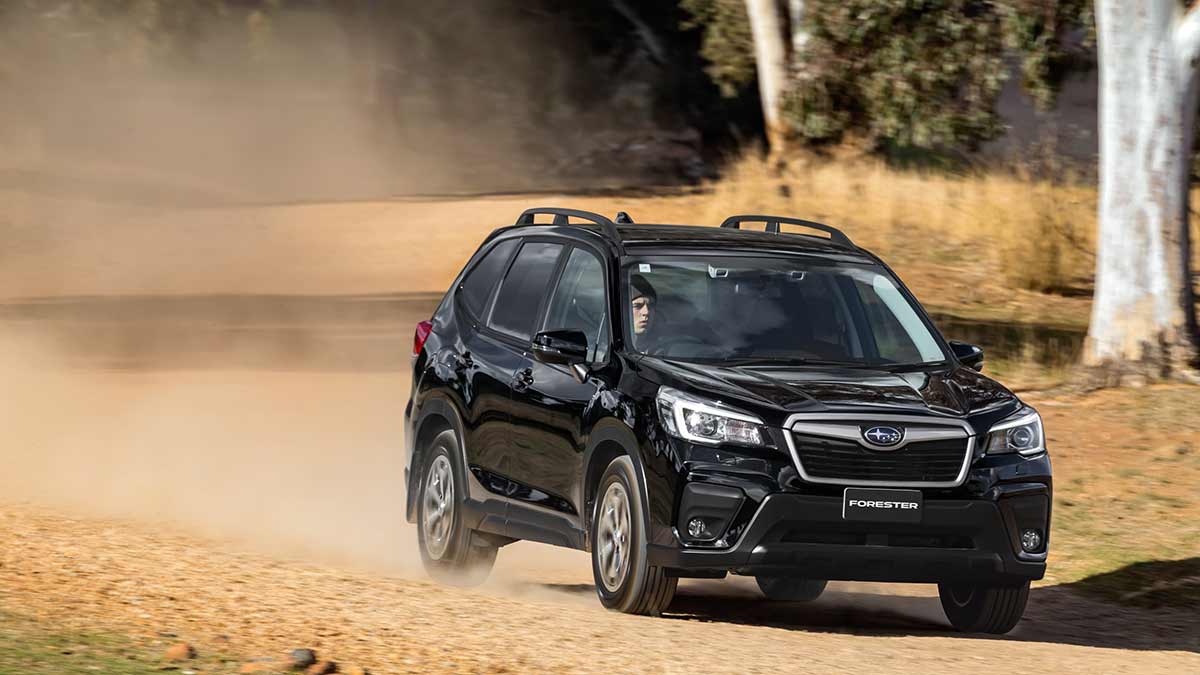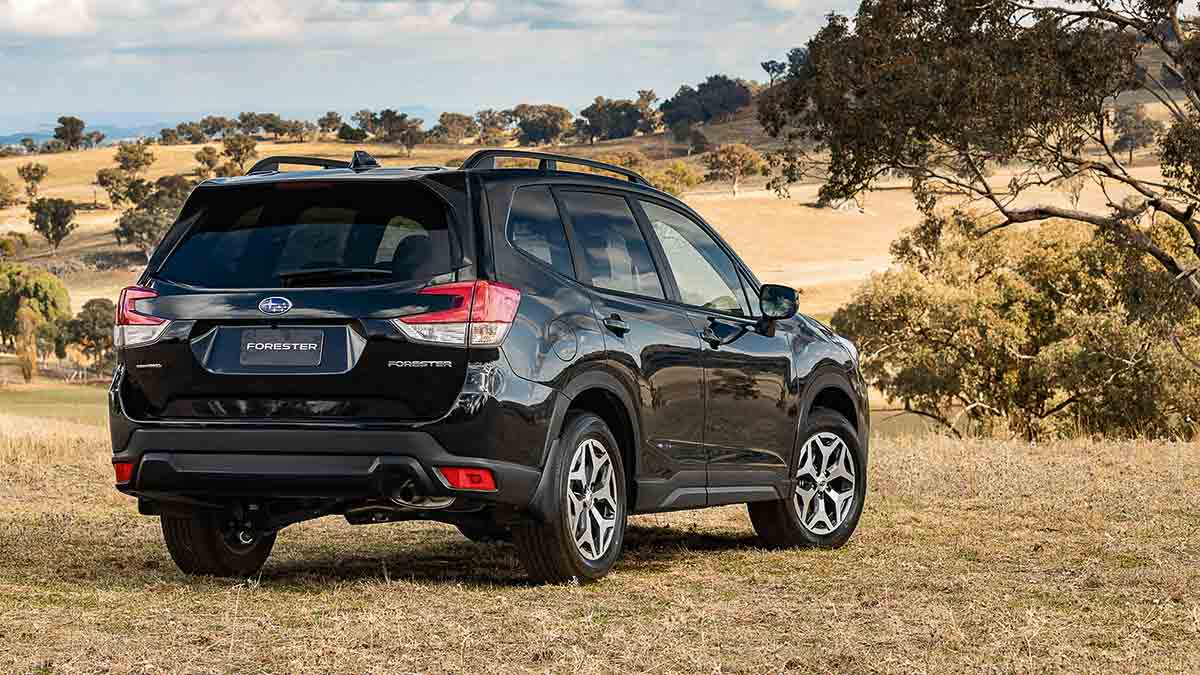Road test: Subaru Forester 2.5i 2019 review

Greg Hill tests the 2019 updates to the Subaru Forester.
There is an unmistakable family resemblance to the recently released 2019 Subaru Forester. At first glance, you could be excused for thinking this is only a minor facelift on the previous model.
A more in-depth look shows this to be an all-new fifth generation of the venerable Forester. Built on Subaru’s massively improved Global Platform, it has a bigger body, a redesigned interior and some interesting new technology.
Thumbs up
Bigger body provides space few in its class can match, and visibility is excellent. Improved safety, manners and driveability build on previous model’s strengths.
Thumbs down
The driver monitoring system is a good first try, but has room for improvement. Awkward roof-mounted anchor for centre rear seatbelt.
The subtle styling changes, rather than a more dramatic shift to the modern, curvy lines of many of its peers, has a few advantages. Forester’s boxy shape makes good use of the bigger platform to provide passenger accommodation and luggage space that few in the class can match.
There is ample leg and head room in both the front and rear, while the larger luggage compartment is complemented by a bigger rear-door opening for easier loading. Revised pillar design and a low waistline means visibility is arguably best-in-class.
Interior presentation has also been smartened up, and attention to detail is first class. The controls are busy but logically placed and easy to use. Unfortunately, Subaru persists with the awkward roof-mounted top anchor for the centre rear seatbelt.
The previous Forester line-up has been substantially culled to four of the most popular variants −the 2.5i, 2.5i-L, 2.5i Premium and 2.5i-S. All use the same upgraded engine, transmission and driveline. Pricing ranges from $33,490 to $41,490 (plus on-road costs).
Subaru’s third-generation EyeSight driver-assist system, which features autonomous emergency braking, lane-keep assist and enhanced pedestrian avoidance, is now standard across the range. Other standard safety features include blind-spot monitoring and rear cross-traffic alert.
For this review we tested the entry-level 2.5i, which is well equipped for a base model but misses some of the more advanced features bestowed upon higher-spec models. At the Forester launch, we also drove the 2.5i Premium and 2.5i-S, which provided the opportunity to try some of Subaru’s new technology, including the driver-recognition system and driver-monitoring system, as well as the reverse automatic braking.
Subaru is the first mainstream brand in Australia to employ this type of driver recognition and monitoring system. It can recognise up to five drivers, and (depending on the model grade) automatically adjust the air-conditioning, some instrument displays, and the seat and mirror positioning to suit each driver’s preferences. In our brief encounter, the DMS was fiddly to set up and like Subaru’s excellent EyeSight system, it works well but can be a touch sensitive at times.

The Forester’s 2.5-litre, four-cylinder horizontally opposed petrol engine has undergone a substantial makeover, with Subaru claiming 90 per cent of it is new and now equipped with direct fuel injection. The changes have not delivered dramatic differences, but a range of minor improvements make a good vehicle even better.
Maximum power is up 10kW to 136kW at 5800rpm, while peak torque of 239Nm at 4400rpm is an extra 4Nm. It is a relatively high-revving engine, with these maximum outputs arriving towards the top end of the rev range. While not quick, our test car felt strong in normal use, flowed along very easily and was never found wanting, and is overall smoother, quieter and more fuel efficient.
This is complemented by further refinements to Subaru’s Lineartronic CVT-style auto transmission, which was already acknowledged as one of the best of its type. It now has better response and is smoother, while the manual mode has been increased to seven steps. In normal driving, the transmission feels more like a conventional auto and usually picks the right ratio for the performance available. Improvements in fuel use now bring the Forester into line with its main rivals.
The new Global Platform underpinning Subaru’s latest generation provides a solid foundation for Forester’s revised steering and suspension set-up. There is a reassuring sure-footedness on the road and a sharper, more responsive steering feel. A good balance of handling and ride comfort is well suited to this type of vehicle.
If the agenda calls for dirt road driving, tackling a bush track or a trip to the snow, Forester has the bases covered. Subaru’s full-time AWD system with X-mode, for low-speed off-road operation, is standard across the range and is a step above the part-time, on-demand systems of most of its peers.
Service intervals are now every 12 months or 12,500 kilometres, and the company caught up with most of its competitors by lifting its warranty to five years/unlimited kilometres at the beginning of 2019.
The verdict
A good vehicle just got better. The Forester is a talented all-rounder, with class-leading off-road ability to satisfy more adventurous families.
|
Price |
Price as tested: $33,490 plus $4394 estimated on-road costs Model range: $33,490 to $41,490 |
|---|---|
|
Drivetrain |
2498cc four-cylinder petrol, seven-step CVT auto and constant AWD Power: 136kW@5800rpm Torque: 239Nm@4400rpm Wheels: Alloy, 225/60 R17 and a full-size spare |
|
Fuel |
91 RON petrol, 63-litre tank 8.9 L/100km (RACV test), 7.4 L/100km (government test) |
|
Standard safety |
Not yet ANCAP tested, seven airbags, blind-spot monitoring, lane-change assist, rear cross-traffic alert, reversing camera and LED headlights. |
|
Standard features |
Adaptive cruise control, electronic park brake, rain-sensing wipers, tyre-pressure monitoring, 6.5-inch infotainment system with Bluetooth, Apple CarPlay and Android Auto connectivity and voice command recognition. |
|
Warranty/services |
60 months/unlimited kilometres, 12 months/12,500 kilometres services |

